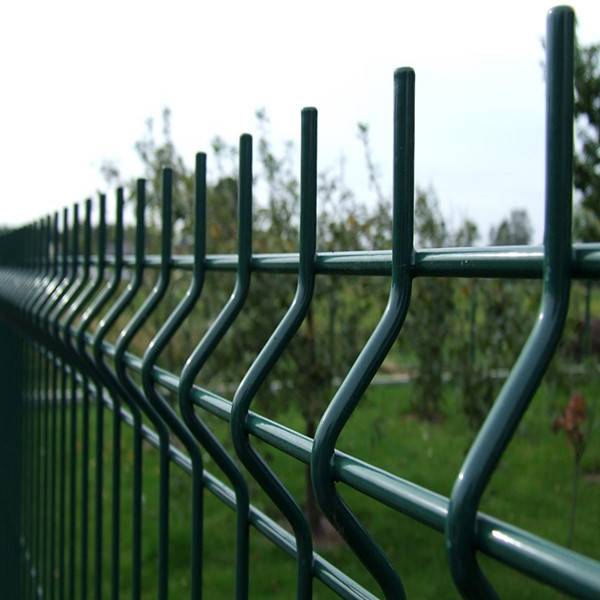
Nov . 06, 2024 00:05 Back to list
Techniques for Welding Steel Mesh in Construction and Industrial Applications
Welding Steel Mesh An Essential Guide
Welding steel mesh is a critical process in various industries, showcasing the versatility and strength of steel in creating durable structures. Whether used for construction, manufacturing, or artistic endeavors, understanding the fundamentals of welding steel mesh can enhance the quality of your projects and ensure reliable results.
What is Steel Mesh?
Steel mesh, also known as wire mesh or welded wire fabric, consists of intersecting steel wires that are welded together at their junctions. This structure provides strength, stability, and flexibility, making it suitable for diverse applications such as reinforcement in concrete, fencing, and even architectural elements. Steel mesh can vary in wire diameter, spacing, and arrangement, catering to specific needs in construction and manufacturing.
The Importance of Welding in Steel Mesh Production
Welding is a joining process that involves melting and fusing materials, typically metals, to create a strong bond. In the context of steel mesh, welding is crucial for several reasons
1. Strength and Durability Welded joints are often stronger than the base materials, which enhances the overall integrity of the mesh. This is particularly important in construction applications where safety is paramount.
2. Cost-Effectiveness By using steel mesh in applications such as concrete reinforcement, builders can reduce the amount of material needed while maintaining structural integrity, ultimately saving on costs.
3. Design Flexibility Welding allows for the creation of custom shapes and sizes of steel mesh to meet specific project requirements, facilitating innovative designs and applications.
4. Ease of Installation Welded steel mesh can be handled and installed more easily than loose or non-welded alternatives, speeding up the construction process.
Types of Welding Techniques for Steel Mesh
Several welding techniques are commonly employed in the production of steel mesh
1. Resistance Spot Welding This method uses an electrical current to generate heat at the contact points of the wires, fusing them together. It is efficient for mass production and offers quick cycle times.
2. Arc Welding Arc welding involves the use of an electric arc to melt the wires at their intersection points. This technique is often used for thicker materials and provides strong joints.
3. Mig Welding (Metal Inert Gas) Mig welding is a popular choice for its ease of use and versatility. It uses a continuous feed of filler wire and a shielding gas to create clean and strong welds.
4. Tig Welding (Tungsten Inert Gas) Tig welding offers precise control and is suitable for detailed work. While slower than other methods, it results in high-quality welds.
welding steel mesh

Applications of Welded Steel Mesh
Welded steel mesh has a wide range of applications across various industries
1. Construction Used as reinforcement in concrete slabs, walls, and foundations, steel mesh improves the tensile strength of structures.
2. Fencing Steel mesh can serve as a robust fencing solution for farms, security applications, and landscaping, providing safety while allowing visibility.
3. Art and Design Many artists utilize welded steel mesh in sculptures and installations, leveraging its aesthetic qualities and structural integrity.
4. Industrial Applications Industries often use steel mesh for platforms, walkways, and safety barriers, ensuring worker safety without sacrificing visibility.
Best Practices for Welding Steel Mesh
To achieve the best results when welding steel mesh, consider the following best practices
1. Choose the Right Equipment Select appropriate welding machines and tools according to the thickness and type of steel mesh.
2. Prepare the Surface Clean the wire surfaces to remove contaminants like rust, oil, and dirt, which can affect weld quality.
3. Control Heat Settings Adjust the welding machine settings according to the specific diameter and type of steel being used to avoid warping or weakening.
4. Inspect Welds After welding, inspect the joints for any cracks or defects that may compromise overall strength. Consider performing non-destructive testing if necessary.
5. Safety First Always wear appropriate personal protective equipment (PPE) when welding, including gloves, helmets, and eye protection.
Conclusion
Welding steel mesh is a fundamental process that contributes significantly to the functionality and safety of various projects. By understanding the types of welding techniques, their applications, and best practices, professionals can ensure high-quality outcomes in their work. Whether in construction, fencing, or artistic endeavors, welded steel mesh remains a vital component in building a stronger future.
-
Why a Chain Link Fence is the Right Choice
NewsJul.09,2025
-
Upgrade Your Fencing with High-Quality Coated Chicken Wire
NewsJul.09,2025
-
The Power of Fence Post Spikes
NewsJul.09,2025
-
The Best Pet Enclosures for Every Need
NewsJul.09,2025
-
Secure Your Property with Premium Barbed Wire Solutions
NewsJul.09,2025
-
Enhance Your Construction Projects with Quality Gabion Boxes
NewsJul.09,2025
Products categories











